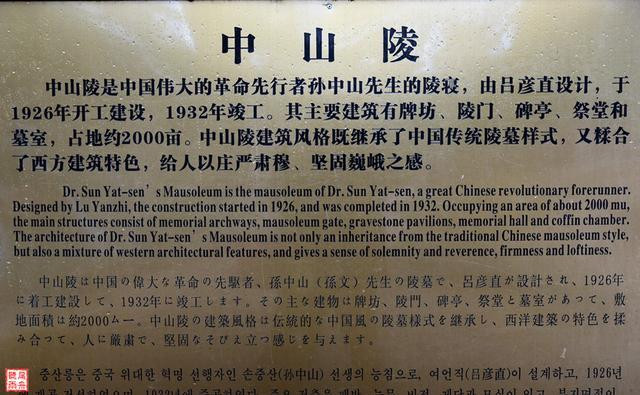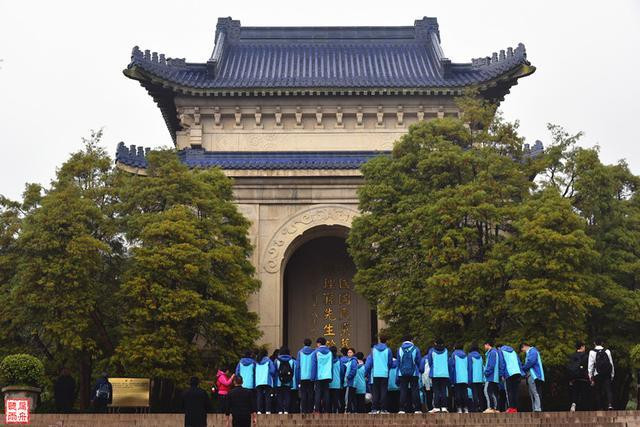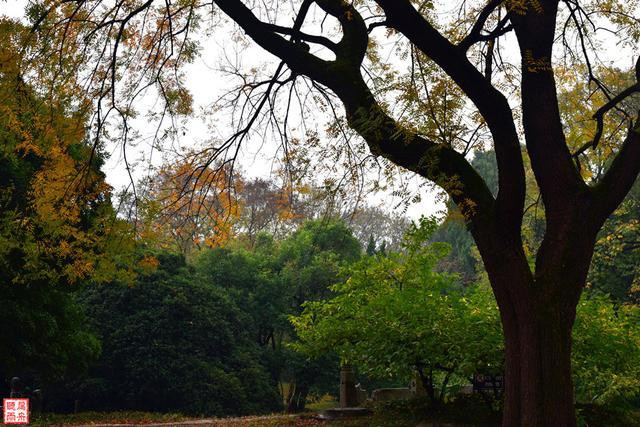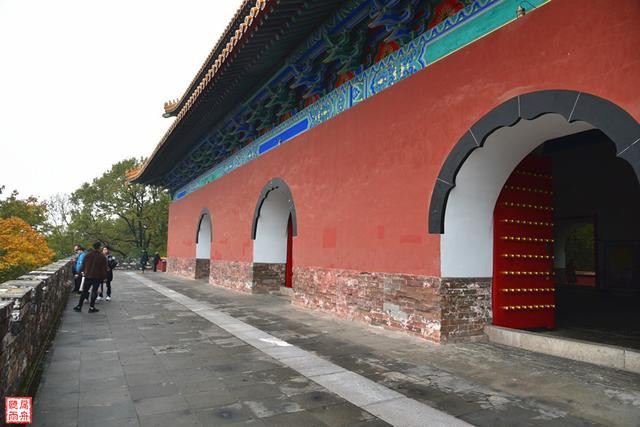This mountain houses a president and an emperor, the only place in history
There is a famous mountain in China where a president and an emperor are buried. It is the only place since ancient times. This mountain is Zhongshan, located in Xuanwu District of Nanjing City. The president sleeping here is Sun Yat-sen, the first president of the Republic of China, and the emperor sleeping here is Zhu Yuanzhang, the founding emperor of the Ming Empire.
Zhongshan is also known as Zijin Mountain, because the top of the mountain is often surrounded by purple clouds. Sun Yat-sen Mausoleum, the tomb of Dr. Sun Yat-sen, the great pioneer of modern China's democratic revolution, is located in the Zhongshan Scenic Area at the southern foot of Zijin Mountain.


In the drizzling late autumn, the cold fog curtain could not stop people from coming to pay homage to the heroic spirit and enthusiasm. Charity was the lofty ideal that Mr. Sun Yat-sen passionately pursued throughout his life. The archway of Sun Yat-sen Mausoleum is called Bo Ai Fang, which is the entrance to the southern end of the tomb path. The cross-lintel of the middle gate of the archway is engraved with the word "Bo Ai" written by Mr. Sun Yat-sen.


The Mausoleum Gate is built in the middle of the center axis of the Sun Yat-sen Mausoleum. Above the main entrance, there are four gold-plated characters: "The world is for the public". This is also Mr. Sun Yat-sen's handwriting, and Mr. Sun Yat-sen has struggled for it all his life.



The stele pavilion is built behind the gate of Tianxia Gongmausoleum. It is built of granite, with double eaves resting on the top of the mountain, and is covered with blue glazed tiles. It imitates the traditional wooden structure of ancient China. It is 17 meters high and 12.2 meters wide. The front of the large stone tablet in the stele pavilion is engraved with three rows of gilt inscriptions vertically from right to left: "The Chinese Kuomintang buried Prime Minister Mr. Sun here, June 1, 18th, the Republic of China." The inscription is in calligraphy by Tan Yankai, a veteran of the Kuomintang.


Sacrifice Hall, the main building of Sun Yat-sen Mausoleum, is located on the top of the mountain at an altitude of 158 meters. The color of the building does not pursue the yellow glazed tiles and red walls of traditional imperial tombs, but adopts blue roofs and gray and white walls, reflecting Mr. Sun Yat-sen's lifelong desire to pursue democracy.

From Bo 'ai Square to the Sacrifice Hall, there are 392 stone steps, symbolizing the 392 million people in China at that time; from the stele pavilion to the Sacrifice Hall, there are 339 stone steps, symbolizing that the number of members of the Kuomintang Senate and House at that time was 339. It means that each person serves as a step to carry forward the spirit of Mr. Sun Yat-sen. The lintel of the memorial hall is engraved with the words "nation","people's livelihood" and "civil rights". They are six gilded seal characters written by Zhang Jingjiang, another Kuomintang veteran. On the middle door are the four gilded characters of "Righteousness of Heaven and Earth" written by Dr. Sun Yat-sen.




In the center of the memorial hall is a sitting statue of Dr. Sun Yat-sen with a height of 4.6 meters. In the tomb chamber in the memorial hall, a reclining statue of Dr. Sun Yat-sen is placed in white jade. Under the reclining statue, Dr. Sun Yat-sen's body is buried. (Taking photos is strictly prohibited in the memorial hall. Here are two photos borrowed from Baidu.)


Not far west of Sun Yat-sen Mausoleum is the Ming Xiaoling Mausoleum where Zhu Yuanzhang, the founder of the Ming Dynasty, and Empress Ma were buried together. Because Queen Ma's posthumous title was "Empress Xiaoci Gao" and because Zhu Yuanzhang pursued filial piety to govern the world, it was named "Xiaoling". Covering an area of more than 1.7 million square meters, it is one of the largest imperial tombs in China.


Later generations have commented that the Xiaoling Mausoleum of the Ming Dynasty inherited the old system of the Tang and Song dynasties of "building a tomb based on a mountain", and created a new system of square tombs as circular mounds, harmoniously unified humanities and nature, achieving the perfect height of unity between man and nature, and becoming an excellent example of traditional Chinese architecture. Art culture and environmental aesthetics.
Because of the rainy weather at dusk, the sky has darkened, and there is no time to walk through the Shinto with rich cultural connotations in order and directly towards the Wenwu Square Gate.


Wenwu Square Gate is the main entrance of Xiaoling, which was repeated in 1999. Yellow tiles, red doors, and red walls. A rectangular door forehead hangs above the main entrance, and four gilded characters "Civil and Martial Square Gate" are written vertically. On the east side of the main entrance, there is a "Special Notice" stele. This stele was erected in the first year of Xuantong of the Qing Dynasty (1909). It is written in six languages to warn of matters needing attention in protecting Xiaoling.

The stele hall was originally the middle gate in front of the Hall of Xiangling, namely the Gate of Xiaoling. It was later destroyed and renovated during the Qing Dynasty. In the stele hall, the stone tablet is written in four large gilded characters: "Governing the Tang and Song Dynasties", which means to praise the Ming Taizu's strategy of governing the country surpassed that of Tang Taizong Li Shimin and Song Taizu Zhao Kuangyin. It was the imperial theme when Emperor Kangxi of the Qing Dynasty visited Jiangnan for the third time in 1699. The reason why Emperor Kangxi issued such an edict to the world was to express his respect and admiration for Zhu Yuanzhang on the one hand, and to win over people's hearts, ease the conflict between Manchu and Han, strengthen rule, and demonstrate the emperor's great talent and strategy.

The main building of the Xiaoling Tomb, the Xiaoling Hall, is located behind the Monument Hall. The original Xiaoling Hall has been destroyed by the war, and there are still three layers of white marble Sumizuo platform foundations, 3.03 meters high and 64 large pillar foundations on the platform.




The existing surface building of the temple is the three-room temple rebuilt twice in the 12th year of Tongzhi of the Qing Dynasty (1873). The temple is the "Historical Materials Exhibition Room of the Ming Xiaoling Mausoleum".


Xiangdian continues north, crossing the Shengxian Bridge, and reaches Fangcheng, the largest existing building in the Ming Xiaoling Mausoleum.



Fangcheng is a huge building in front of the Baoding of Xiaoling. The exterior is built of giant strips of stone. It is 75.26 meters long from east to west, 30.94 meters wide from north to south, 16.25 meters high at the front and 8.13 meters high at the back. The bottom is Shumizuo.

In the center of Fangcheng is an arch that leads to a circular arch tunnel. Walking up the tunnel from 54 steps, you will face the south wall of Baoding, built with 13 layers of stone. The inscriptions on the south wall of Baoding indicate that Zhu Yuanzhang, the founder of the Ming Dynasty, and Empress Ma, are buried here.

Above Fangcheng is the Ming Tower, and you can climb the Ming Tower along the trails on the left and right sides of Fangcheng. There are three arches on the south side of the Ming Tower, and one arch on each of the other three sides. There are 9 rows of door nails on each door, with 9 nails on each row, to show the glory of the Ninth Five-Year Plan. North of Minglou in Fangcheng is Chongqiu, which is about 400 meters straight in length, which is Baoding. It is also known as Baocheng, where Zhu Yuanzhang and Empress Ma's bedroom are located.



Although Zhu Yuanzhang was regarded as a noble figure in the 1950s, the ground buildings in the cemetery behind him were burned and rebuilt several times, and there were few real original objects, which is regrettable. Fortunately, according to historical research, although the Xiaoling Mausoleum of the Ming Dynasty was looted several times, the underground palace was never successfully excavated by Wang Yang thieves. It is still well preserved. I don't know what the mystery is. It is a blessing despite misfortune.
Previous Article:Golden autumn, beautiful scenery of Jinling
Next Article:May Day Tour of Nanjing
